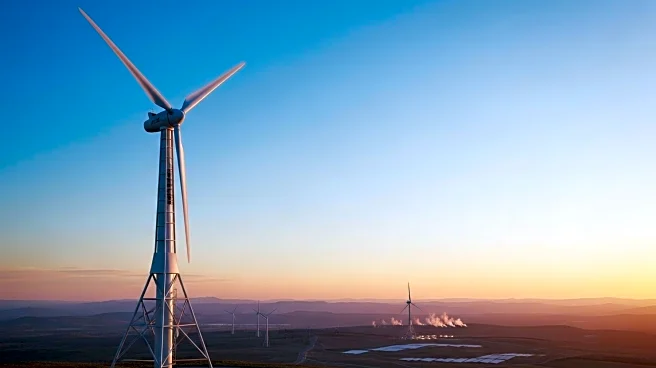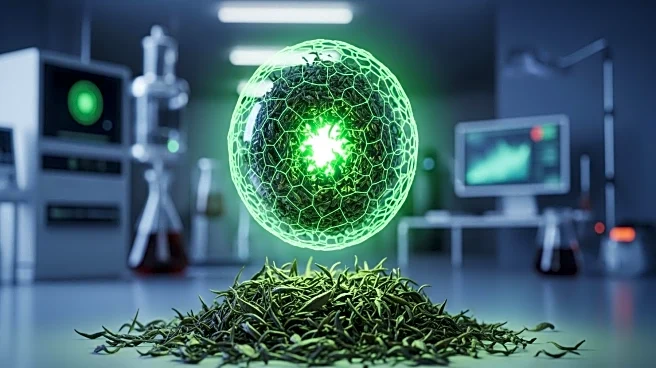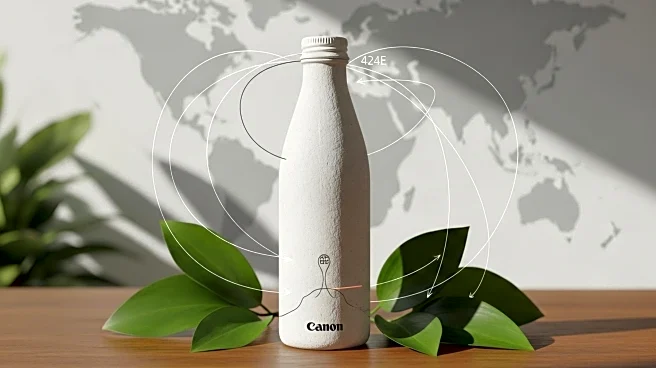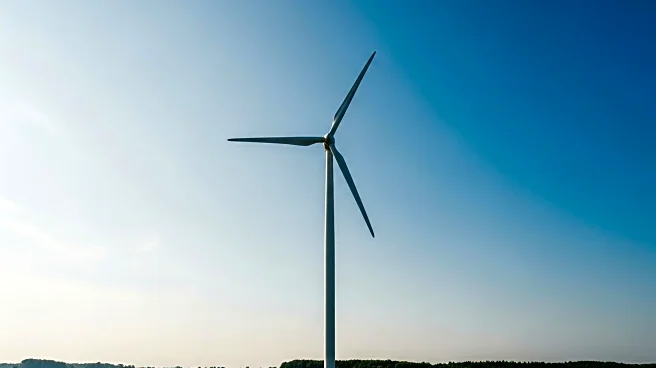What is the story about?
What's Happening?
Scientists at the University of Science and Technology Meghalaya (USTM) have developed a method to produce bioethanol from spent tea leaves using nanotechnology. This innovative research, published in the Springer Nature journal Biomass Conversion and Biorefinery, marks a significant advancement in sustainable energy production. Led by Dr. Shruti Sarma and Dr. Rajib Saha, the study utilizes a novel iron-zinc oxide (Fe-ZnO) nanocatalyst and microwave-assisted techniques to convert tea waste into bioethanol, a renewable fuel. The process achieves a bioethanol yield of 75% within one to two hours, offering a promising solution to energy sustainability and agricultural waste management.
Why It's Important?
This development is crucial for India's tea industry, which produces large quantities of waste annually. By converting tea waste into bioethanol, USTM's research provides both environmental and economic benefits, aligning with India's vision for a circular economy and cleaner energy future. The use of nanotechnology enhances the efficiency of renewable energy production, potentially reducing energy consumption and improving product purity. This innovation could lead to significant advancements in biofuel production, offering a sustainable alternative to fossil fuels and contributing to global efforts to combat climate change.
What's Next?
The researchers plan to collaborate with industry partners to develop pilot-scale models for bioethanol production from tea waste. This could be adopted by tea estates and processing units, particularly in tea-producing regions like Assam and Meghalaya. The study highlights the potential for further research and development in green chemistry and materials science, paving the way for scalable and sustainable biofuel production. As India faces increasing pressure to embrace sustainability, such innovations could transform waste management practices and contribute to the country's renewable energy goals.
Beyond the Headlines
The use of nanotechnology in this research underscores its potential to improve renewable energy efficiency. The Fe-ZnO nanocatalyst facilitates faster reaction rates and reduces energy consumption, showcasing the promise of nanotechnology in enhancing catalytic performance. This breakthrough reflects the Northeast's potential to lead India's biofuel revolution, demonstrating how everyday waste can be transformed into valuable energy resources. The study not only advances USTM's reputation in green chemistry but also marks an important step toward a cleaner, greener future.
AI Generated Content
Do you find this article useful?













